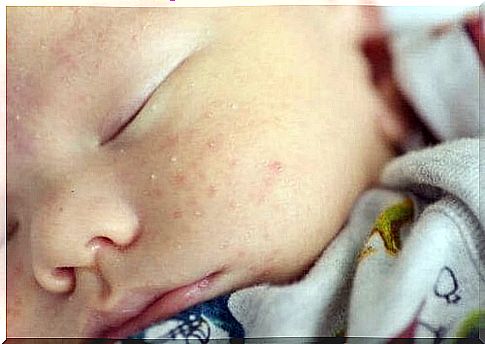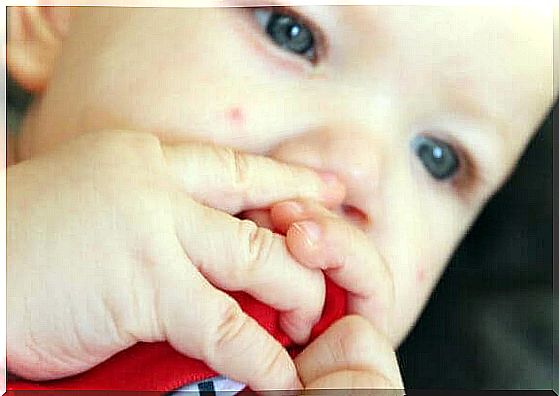Read All About Milia In Newborns

Milia in newborns is a skin condition whose main feature is small white pimples or cysts. It is a very common condition. In fact, 40% of babies develop these tiny pimples that contain keratinous material.
Milia in newborns
What is it?
Milia in newborns is a group of pearly or yellowish white pimples that often appear on the face. They generally have a diameter of about 1 or 2 millimeters. In particular, they appear on the baby’s cheeks, forehead and chin, as well as on the inside of their mouths.
Milia appears as small epithelial cysts filled with a keratin-like substance. When you squeeze it, a small pearl-like substance appears, which is formed by spores of keratinocytes. We should mention that you don’t need to run any tests to diagnose it.
What causes it?

Milia occurs when epithelial cells become trapped in the small cavities on the surface of the skin. This causes the small, white pearly spots on their skin. It is common for parents to think that there is acne on their baby’s face. Milia and acne, however, are completely different conditions.
What are the effects?
Milia does not cause any effects. In fact, babies do not feel any discomfort, nor do they feel pain of any kind. These outbreaks do not cause fever, itching or other complications. In addition, they also do not require medical treatment.
Are there risks for newborns with milia?
The first thing to keep in mind is that milia cysts are benign. In very rare situations, this can indicate certain skin diseases. For example, it can be linked to the:
- Bazex-Dupre-Christol syndrome
- Parry-Romberg syndrome
- Gardner syndrome
How to treat milia in newborns

It is very important to know that the skin of the newborn is very delicate. Therefore, take extra care to avoid spreading bacteria that can cause problems.
Here are some things to keep in mind:
- Do not rub or try to squeeze the pimples. This can damage your baby’s skin and leave scars.
- We recommend cleaning the affected area with special soap for newborns.
- If milia develop when your child is older or develop in more sensitive areas, such as the mouth or eyes, it can take up to four months to disappear.
- If it doesn’t go away after three months, see the pediatrician. He will then tell you what to do.
While most cases do not require specific treatment, it is essential that you get a medical evaluation. This way you can get a good diagnosis and as parents keep calm. In addition, you avoid unnecessary treatments that can even be counterproductive for your baby.









